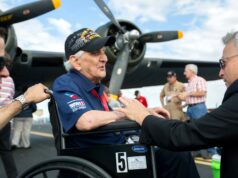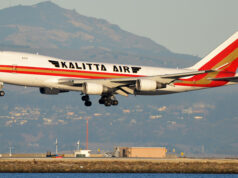
As the preeminent university dedicated to aviation and aerospace, Embry-Riddle Aeronautical University is the alma mater of many of our readers, our publisher and countless others who are in every facet of aviation – flying, fixing, building, designing, engineering protecting and conducting myriad business functions.
The founders of Embry-Riddle were visionary entrepreneurs with dreams that gave rise to a reality bigger than their imaginations. It started with The Embry-Riddle Company founded 22 years to the day after the Wright brothers historic flight at Kitty Hawk. Their early mission was to promote aviation – as an airmail carrier, in aircraft sales, teaching the daring to fly, providing thrill rides, performing air shows, even transporting passengers on their scheduled mail routes. From a desk in a hotel lobby, the company can be credited with operating the first air travel agency, having organized other mail carriers and selling their passenger space. The Embry-Riddle story runs deep into the roots of aviation’s history.

T. Higbee Embry and John Paul Riddle struck a deal. Embry, an entrepreneur recognized the profitable possibilities of aviation. Riddle was the dashing barnstormer who as child questioned why God had not given him wings. Riddle’s father was a high school principal who taught his son to be a lifelong learner and a teacher. Despite the multifaceted nature of the early company, Riddle always dreamed of building an “Air University.”
In its third year of operations, in1929, Embry-Riddle was one of the first five flying schools in the country to be certified under the Department of Commerce’s newly-minted Air Commerce Act. However, later that year, the Embry-Riddle Company merged with the newly-formed Aviation Corporation (AVCO), an alliance that came with a price. Although Embry-Riddle’s airline and cargo routes remained prosperous, the company no longer sold aircraft, and in 1930 AVCO closed Embry-Riddle’s flying school. A year later, Embry left the company and retired to California, where he lived until his death in 1946.
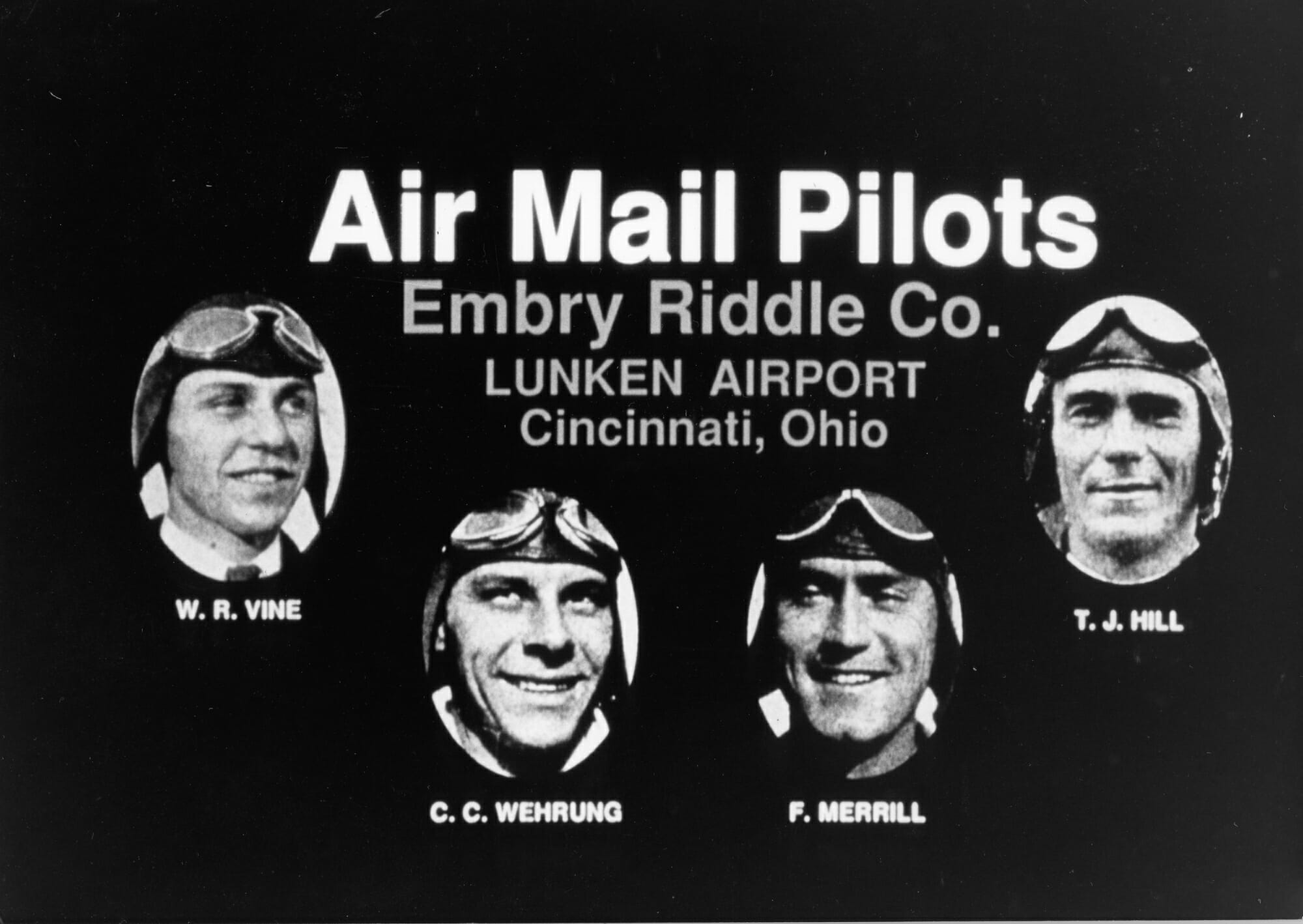
In 1932, AVCO moved its Embry-Riddle Division to St. Louis where it was merged into a new division called American Airways, leading the original Embry-Riddle Company to cease its independent enterprise for a few years.
Riddle moved to New York, then to Dallas, and on to St. Louis, the new headquarters of American Airways. After less than a year in St. Louis with the fledgling airline, Riddle left the company in 1932 and moved to Florida – a location and climate he thought offered tremendous potential for aviation. He envisioned Miami as the gateway to South America, a new horizon for aviation.
School of Aviation opens in South Florida and soon supports the war efforts
Between his arrival in South Florida in 1932 and 1939, Riddle had opened three aviation companies. A seaplane base on Biscayne Bay was his fourth endeavor, with a new partner, John McKay. They named it Embry-Riddle School of Aviation. Growth came swiftly and another base of operations was established at Miami’s Municipal Airport. The charismatic Riddle was known to anyone who had interests in aviation, including his friend Howard Hughes who called on him to act as tour guide and escort to his friend, film actress Jane Russell, while Hughes was busy making his deals. These were captivating times in a fashionable city, but the looming opportunity was anything but glamorous.
War drums were becoming deafening across the Atlantic and growing louder in the Pacific. Riddle and McKay readied the school to train pilots and mechanics. Each had long believed that if another war were to break out, airplanes would play a major role. Pearl Harbor proved them right.
Training facilities had already expanded to four sites and cadets poured in from the Army Air Corps and the Royal Air Force. Five hundred cadets could be trained during each nine-week course that included 60 flight hours. The school’s Engine Division used assembly line tactics to train for overhaul. There was also an Instrument Department to instruct students to build and repair all varieties of aviation instrumentation.
The seaplane base continued operations during the war as an all-female division. Across all parts of the operations, adjustments were made as necessary and resources were allocated where needed to maintain a flexible and efficient machine. The contribution of Embry-Riddle, providing pilots, mechanics, and technicians to the allied war effort, was undeniable and without precedent.

University repurchases 1927 ASO-10 WACO
One of Embry-Riddle’s early endeavors was as a dealer for WACO aircraft. The first aircraft they purchased for resale were used for other company interests; barnstorming, teaching flight and delivering mail. One of those units passed through a number of owners before meeting a tragic end in when it crashed into Florida’s Lake Apopka, ending the owner-pilot’s life and those of his two passengers. Clyde Dawson, an aviation enthusiast, salvaged the wreckage, which included the title plate, enabling it to be restored with the help of volunteers aided by detailed plans of the craft he has acquired from the Smithsonian Institution. During the restoration period, he researched its provenance uncovering the fact that it had originally belonged to Embry-Riddle, now the world-famous university also located in Central Florida. Mr. Dawson contacted the university and in 2007, its College of Aviation arranged to purchase the aircraft. The relic is a reminder of the depth of Embry-Riddle’s roots into the history of aviation.
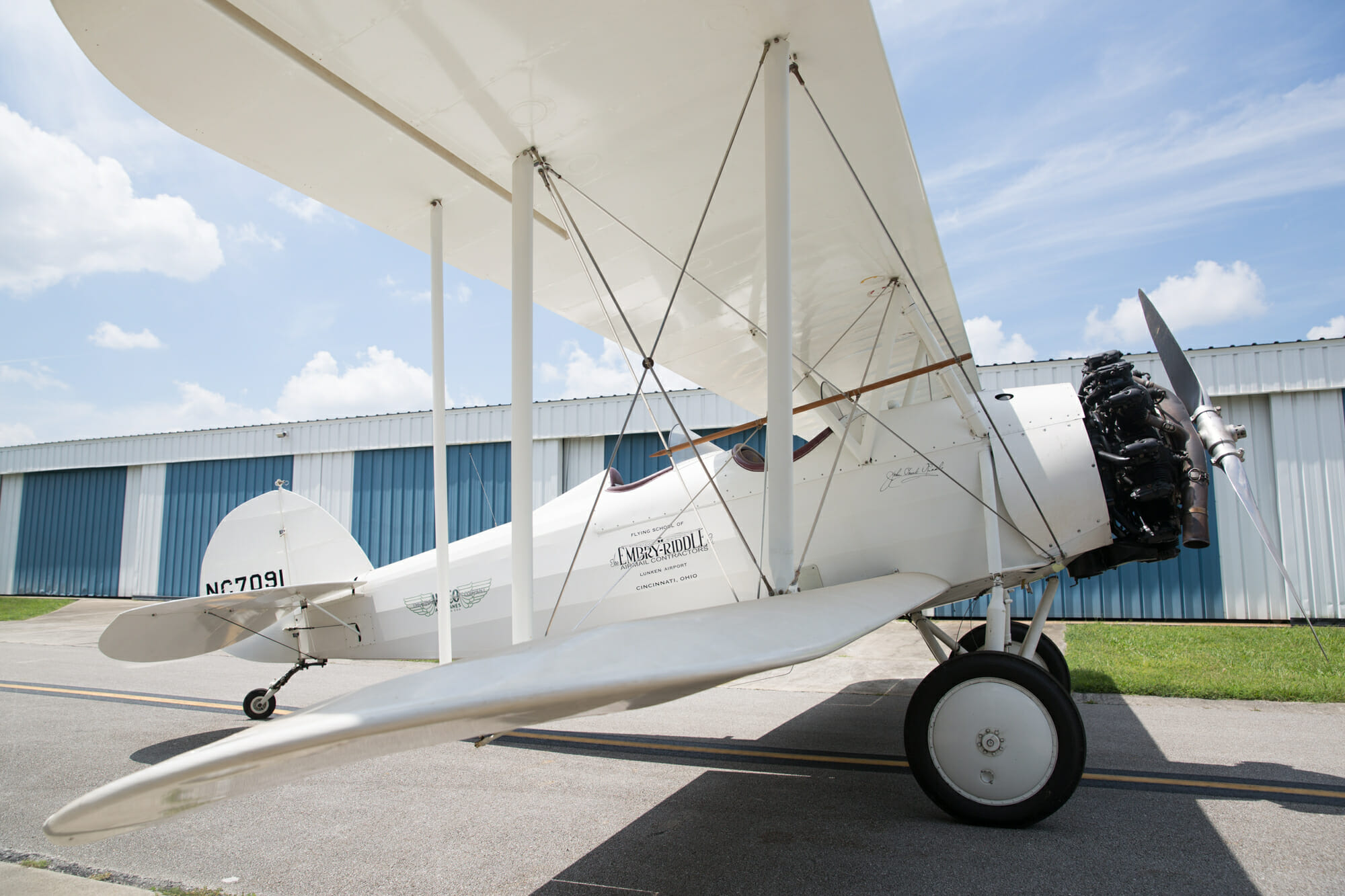
Embry-Riddle approved to educate veterans under G.I. Bill
As was true for so many of the companies involved in the military-industrial complex, post-war Embry-Riddle realigned to define its new role. It became one of the first institutions approved to educate veterans under the new Government Issued Bill, commonly known as the G.I. Bill. Before separating from the Navy, after the PT109 tragedy, even John F. Kennedy took a lesson with Embry-Riddle.
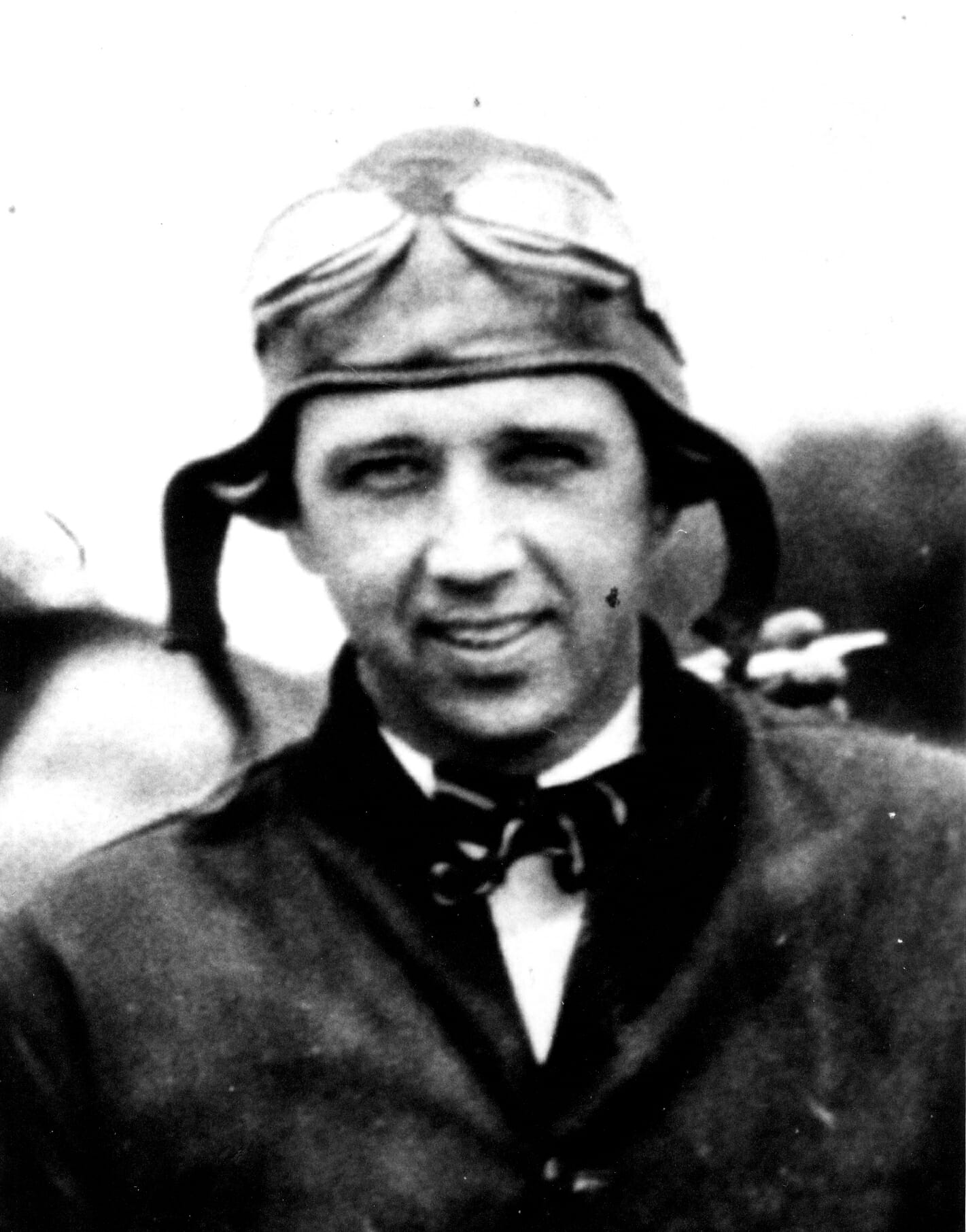
In 1944, John Paul Riddle set his sights on the burgeoning aviation industry in Brazil. A partnership that involved the Brazilian Air Ministry and Embry-Riddle was established in São Paulo. Within three years, under his leadership with 650 North American instructors, he turned it over to the Brazilian government having graduated 3,500 students.
Back in Miami, John McKay was focused on civil aviation. He reorganized and moved flight operations to Opa-Locka Airport. Space remained an issue, as the divisions were located miles apart. During the war in Korea, Embry-Riddle was contracted to train mechanics and technicians for the new U.S. Air Force.
International students bolster Embry-Riddle’s reputation
In 1951, McKay died unexpectedly and his widow assumed the presidency. By now, the school was named Embry-Riddle International School of Aviation and it was living up to the moniker. Its reputation was expanding globally as students from Europe, the Middle East, South and Central America, the Caribbean, and the Far East returned to their countries to extol their Embry-Riddle education and launch their aviation careers.
Under Isabel McKay, the school reorganized as a non-profit entity and was renamed Embry-Riddle Aeronautical Institute (ERAI). The non-profit status was a pragmatic move enabling the Board to accept philanthropic gifts in addition to the students’ tuition to help sustain programs and support growth.
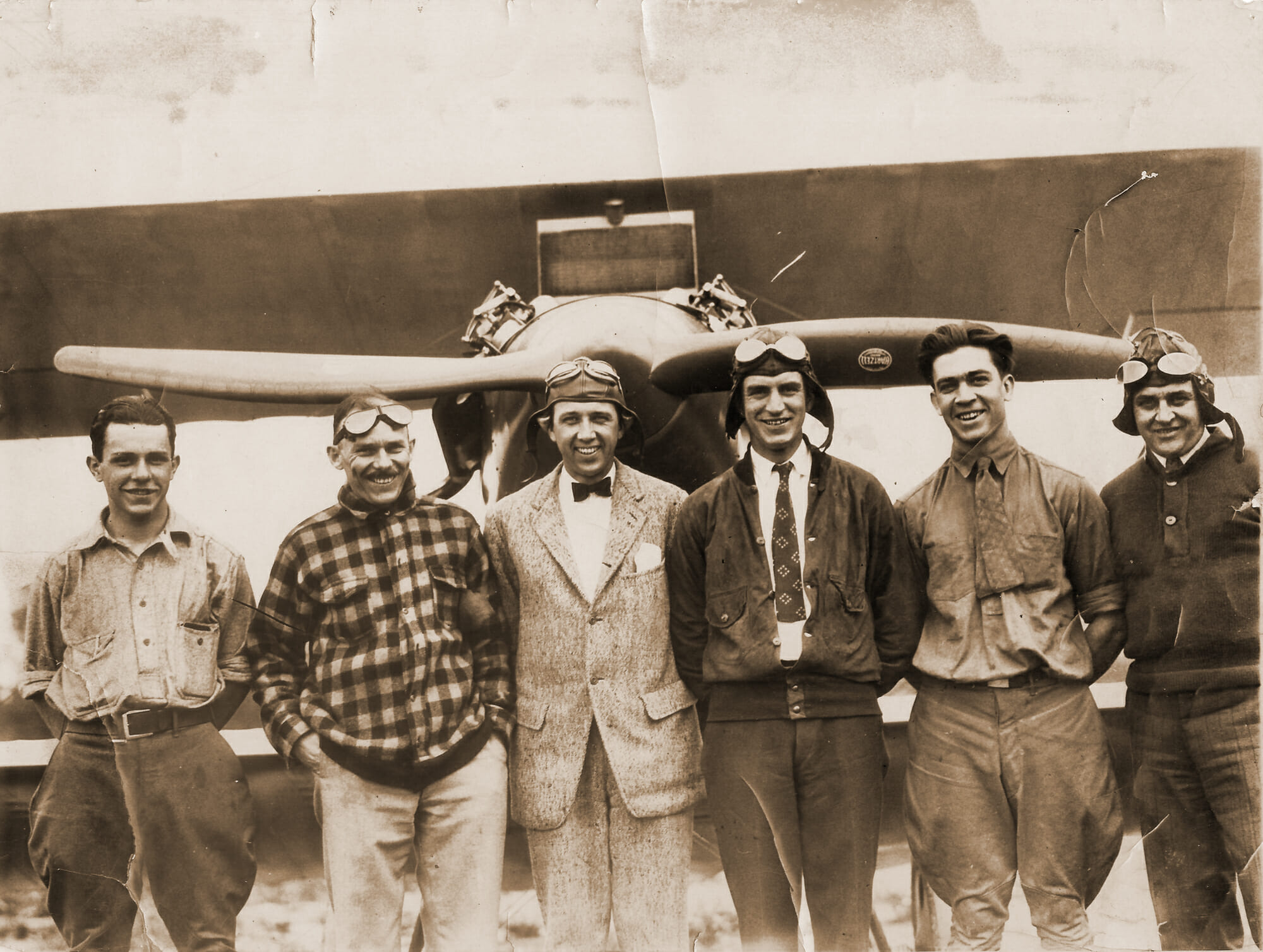
Aviation legend Jack Hunt becomes Embry-Riddle President
A major turning point for the institute came in 1963 when a former Navy Commander with a notable aviation record of his own, was named President. Jack Hunt was a legend who had been awarded a trophy in 1958 by President Eisenhower for piloting the longest non-stop, non-refueled trans-Atlantic flight in an airship. Like founder John Paul Riddle, Hunt was handsome, charismatic, and a true visionary. From the beginning of his tenure, he began laying the foundation to boost enrollment, establish a centralized campus, foment ties with industry, and earn academic accreditation – the last goal wasn’t likely given the technical nature of the institute.
Not long after assuming his role, he was informed that the base of flight operations, the Tamiami Airport in Florida, would soon close. He saw this not as a setback but as an opportunity to build a cohesive campus to support all the divisions, something he identified as necessary to gain accreditation.
An exhaustive list of possible locations ended with the Ormond Beach Airport, about 260 miles north of Miami, Florida on the Atlantic coast. There was a hurdle, however. Beyond the airfield, there were no facilities to establish the campus. Neighboring Daytona Beach offered a temporary solution. On the airport property, there were vacant World War II era barracks, classrooms, and offices that had been training facilities for the Army and Navy.

Embry-Riddle earns accreditation, gains University status
That elusive accreditation was awarded in 1968 and university status was granted. In 1970 the name was changed to Embry-Riddle Aeronautical University – today recognized worldwide as the unrivaled pinnacle in aviation and aerospace education.
The cohesive campus that Jack Hunt envisioned for a thousand students began to take shape in those first few years. The college community he imagined started to evolve. Athletics returned, dormitories and academic buildings were constructed, and student organizations were founded. Today, the university educated a student population at the Daytona campus of over 6000 students from undergraduate through doctoral degrees.

Prescott and Worldwide campuses established
The story of Embry-Riddle Aeronautical University in this modern era is about confidence. Earlier than most, founders Embry and Riddle recognized the importance of aviation to the world and thus began a culture that focuses on the future to identify opportunity and demonstrate the confidence to persevere. Providing education to military personnel on their bases was just such an opportunity. The first remote location was established in 1970 at Fort Rucker, Alabama. Leadership in creative education established what is today the Worldwide Campus – operating in more than 135 centers around the globe, delivering award-winning online education, growing Embry-Riddle Asia in Singapore and India, and launching a new partnership in Brazil.
The residential campus in Prescott, Arizona, opened in 1978 with 268 students in Aeronautical Science. Today, with more than 2,700 students and home to the nation’s only College of Security and Intelligence, it has gained prominence and distinction in its own right.
This piece was originally written in observance of Embry-Riddle Aeronautical University’s 90th anniversary.











































